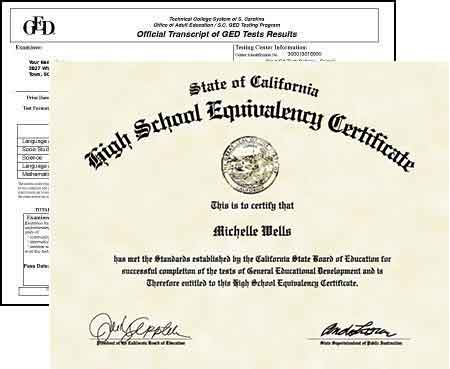Trends in Custom Packaging for Startups
For startups, packaging is more than a container—it sets the tone for brand identity, customer engagement, and overall product value. With evolving consumer expectations and market competition, staying updated on packaging trends can help new businesses stand out. Zee Custom Boxes UK
supports startups by offering innovative packaging solutions that meet both design and practical requirements.
Why Packaging Trends Matter for Startups
Creating a Strong First Impression
The first thing customers see is not the product but its packaging. Modern trends push for unique designs that create a sense of curiosity and connection, turning first-time buyers into repeat customers.
Aligning with Consumer Expectations
Consumers expect packaging to do more than protect a product. They want sustainability, innovation, and thoughtful design—attributes that startups must consider to compete effectively.
Boosting Brand Recognition
Startups can use packaging trends to build a memorable identity. Consistency in color, texture, and typography can make a brand recognizable at a glance.
Emerging Packaging Trends for Startups
Sustainable Packaging Choices
Eco-consciousness has moved beyond a buzzword. Startups are choosing recyclable, compostable, or biodegradable materials to align with environmentally aware buyers.
Minimalist and Clean Designs
Simplified graphics and subtle typography are gaining attention for their ability to convey modernity and reliability without unnecessary clutter.
Bold Typography and Visual Impact
Fonts and text placement are becoming integral design elements, helping businesses communicate brand messages in a way that’s sharp and direct.
Innovations Transforming Startup Packaging
Smart Packaging Integration
QR codes and NFC tags are becoming tools for enhancing customer interaction. Startups use these features to link buyers to instructions, rewards, or brand stories.
Reusable and Multipurpose Designs
Packaging that can be repurposed adds value, reduces waste, and creates a talking point for environmentally conscious consumers.
Artistic Customization
Limited edition designs and creative collaborations are attracting attention, giving startups a fresh way to showcase their brand personality.
How Zee Custom Boxes UK Supports Startup Packaging Needs
Flexible Order Sizes
Startups often face unpredictable demand. Zee Custom Boxes UK provides options for small and large quantities, helping businesses order based on immediate needs without overspending.
Expert Design Assistance
Instead of relying solely on templates, startups can work with professionals who understand trends, materials, and branding strategies.
Diverse Material Selection
Whether a startup focuses on luxury, affordability, or eco-friendliness, having access to different materials makes it easier to align with the right audience.
Choosing the Right Packaging Trend for Your Startup
Know Your Product
The nature of your product—fragile, consumable, luxury, or everyday—will guide whether your packaging needs cushioning, compartments, or premium finishes.
Understand Your Target Market
Different demographics have different preferences. Younger consumers may respond to interactive features, while eco-conscious buyers prioritize sustainable materials.
Balance Aesthetics and Budget
Trends are valuable, but practicality matters too. Packaging should reflect your brand while staying cost-effective and aligned with production goals.
The Role of Packaging in Building Brand Loyalty
Enhancing Customer Experience
Trendy packaging isn’t just about appearance—it’s about how customers feel when they receive or unbox a product.
Encouraging Social Sharing
Eye-catching packaging often leads to free publicity, as customers share images and videos on social media, helping startups build visibility organically.
Reinforcing Brand Values
Every design choice—material, color, typography—reflects what a brand stands for and builds long-term trust.
Final Outlook
Packaging is evolving rapidly, and startups must keep pace to stay competitive. By following emerging trends and working with experienced providers like Zee Custom Boxes UK, new businesses can access solutions that meet design standards, appeal to their audience, and support their growth strategies. Thoughtful packaging not only protects products but also drives recognition, customer connection, and brand loyalty over time.
For More Visit:
https://zeecustomboxes.co.uk/Trends in Custom Packaging for Startups
For startups, packaging is more than a container—it sets the tone for brand identity, customer engagement, and overall product value. With evolving consumer expectations and market competition, staying updated on packaging trends can help new businesses stand out. Zee Custom Boxes UK
supports startups by offering innovative packaging solutions that meet both design and practical requirements.
Why Packaging Trends Matter for Startups
Creating a Strong First Impression
The first thing customers see is not the product but its packaging. Modern trends push for unique designs that create a sense of curiosity and connection, turning first-time buyers into repeat customers.
Aligning with Consumer Expectations
Consumers expect packaging to do more than protect a product. They want sustainability, innovation, and thoughtful design—attributes that startups must consider to compete effectively.
Boosting Brand Recognition
Startups can use packaging trends to build a memorable identity. Consistency in color, texture, and typography can make a brand recognizable at a glance.
Emerging Packaging Trends for Startups
Sustainable Packaging Choices
Eco-consciousness has moved beyond a buzzword. Startups are choosing recyclable, compostable, or biodegradable materials to align with environmentally aware buyers.
Minimalist and Clean Designs
Simplified graphics and subtle typography are gaining attention for their ability to convey modernity and reliability without unnecessary clutter.
Bold Typography and Visual Impact
Fonts and text placement are becoming integral design elements, helping businesses communicate brand messages in a way that’s sharp and direct.
Innovations Transforming Startup Packaging
Smart Packaging Integration
QR codes and NFC tags are becoming tools for enhancing customer interaction. Startups use these features to link buyers to instructions, rewards, or brand stories.
Reusable and Multipurpose Designs
Packaging that can be repurposed adds value, reduces waste, and creates a talking point for environmentally conscious consumers.
Artistic Customization
Limited edition designs and creative collaborations are attracting attention, giving startups a fresh way to showcase their brand personality.
How Zee Custom Boxes UK Supports Startup Packaging Needs
Flexible Order Sizes
Startups often face unpredictable demand. Zee Custom Boxes UK provides options for small and large quantities, helping businesses order based on immediate needs without overspending.
Expert Design Assistance
Instead of relying solely on templates, startups can work with professionals who understand trends, materials, and branding strategies.
Diverse Material Selection
Whether a startup focuses on luxury, affordability, or eco-friendliness, having access to different materials makes it easier to align with the right audience.
Choosing the Right Packaging Trend for Your Startup
Know Your Product
The nature of your product—fragile, consumable, luxury, or everyday—will guide whether your packaging needs cushioning, compartments, or premium finishes.
Understand Your Target Market
Different demographics have different preferences. Younger consumers may respond to interactive features, while eco-conscious buyers prioritize sustainable materials.
Balance Aesthetics and Budget
Trends are valuable, but practicality matters too. Packaging should reflect your brand while staying cost-effective and aligned with production goals.
The Role of Packaging in Building Brand Loyalty
Enhancing Customer Experience
Trendy packaging isn’t just about appearance—it’s about how customers feel when they receive or unbox a product.
Encouraging Social Sharing
Eye-catching packaging often leads to free publicity, as customers share images and videos on social media, helping startups build visibility organically.
Reinforcing Brand Values
Every design choice—material, color, typography—reflects what a brand stands for and builds long-term trust.
Final Outlook
Packaging is evolving rapidly, and startups must keep pace to stay competitive. By following emerging trends and working with experienced providers like Zee Custom Boxes UK, new businesses can access solutions that meet design standards, appeal to their audience, and support their growth strategies. Thoughtful packaging not only protects products but also drives recognition, customer connection, and brand loyalty over time.
For More Visit: https://zeecustomboxes.co.uk/











